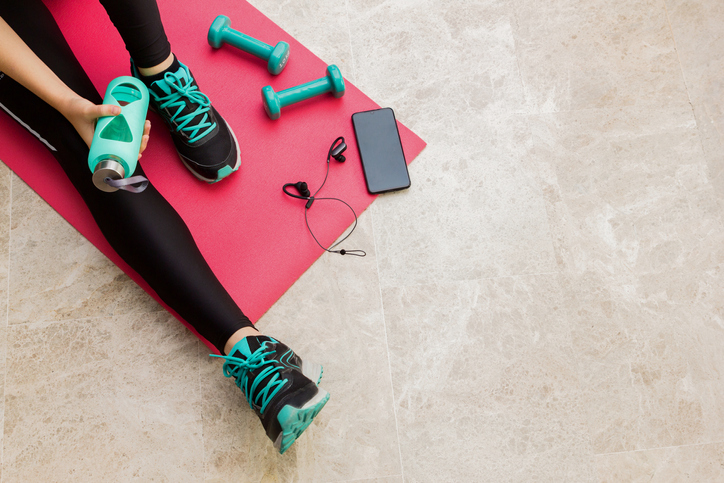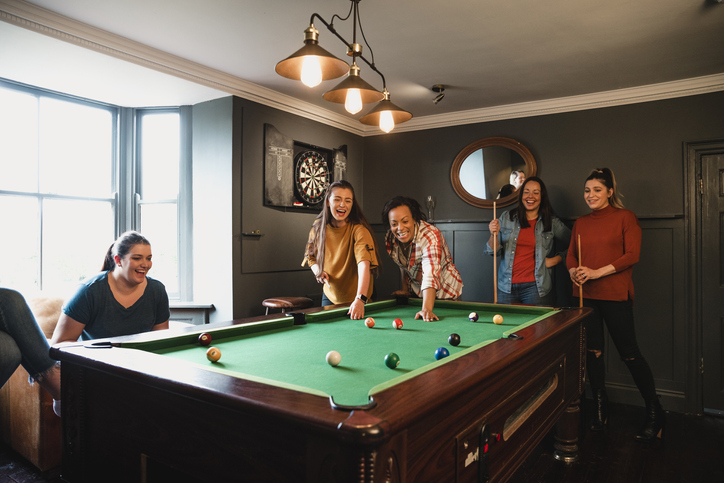It’s almost an urban cliché that most gym memberships are expensively unused. Although gym memberships are taken out with the best intentions, fitting workouts into a busy modern lifestyle is, in reality, more difficult than people tend to assume.
Some days, there’s simply no time to waste traveling for a workout. On other days, the motivation isn’t quite there to leave home when the weather’s not on your side.
But the fact remains that regular exercise is excellent for both your physical and mental health, so it’s a shame to let that fitness ambition slide. For many people, the ideal solution is to set up a home gym, an alternative that offers many strong benefits. Additionally, integrating recovery tools like an ice barrel or other cold therapy equipment into your home gym can complement exercise routines and enhance overall wellness, providing a holistic approach to fitness and recovery.
Table of Contents
- Convenience and ease of use
- Find the best gym space
- Choose the right gym gear
- Plan storage from the start
- Making your home gym as energizing as possible
- Incorporating smart fitness technology
- Guaranteeing a strong internet connection
- Get the most out of your home gym
Convenience and ease of use
A carefully built home gym makes it easier to fit a quick workout into your daily routine without all the hassle of driving to a maybe distant location. There are numerous online workout programs you can follow, offering both standard and personalized routines for beginners, male and female fitness models, and fitness gurus.
Whether you are DIY or hiring a professional, a home gym doesn’t necessarily need to cost a fortune. However, to take advantage to the fullest, you must build a gym setup that fits perfectly into your needs.
Find the best gym space
A basic home gym can be set up in surprisingly little space. At the smallest scale, enough room for a yoga mat lets you start with stretches and core exercises. For high-intensity interval training (HIIT), you’ll need a little more room to move, along with a floor that’ll stand up to the impact. Usual home gym spaces include basements, converted attics, or outdoor areas like porches or decks if your climate and situation allow.
If you plan on the full weights, treadmill, and rowing machine experience, you’re probably looking at an unused room like a home office, den, garage, or spare bedroom.
But however big or small, the key is to find an area of your home that you can call your gym and use at a moment’s notice, whether it’s a corner of your living room or a fully equipped dedicated space.
Choose the right gym gear
While a gym membership gives you access to a wide range of top-line equipment, most people only use a small proportion. A home gym can be quick and inexpensive if you only install the gear you need for your favorite workout styles. For example:
- Yoga / Pilates: For simple yoga or Pilates workouts, a comfortable, high-quality mat is all you’ll need. More advanced routines and poses may call for a Pilates ball or exercise block, which can be bought inexpensively.
- Boxing: With its combination of strength, endurance, and coordination training, boxing makes a great all-around workout to do at home. All you’ll need are some boxing gloves and a freestanding punching bag or one suspended from a sturdy beam.
- Cardio: An extensive cardio workout ups the ante with the necessary equipment. Consider jump ropes, treadmills, elliptical machines, and HIIT straps, depending on your preferred routine.
- Strength training: This is the workout type that benefits from having the widest range of equipment available. However, you needn’t invest in everything all at once. Start small with weights and resistance bands, then move up through stability and BOSU balls to multifunctional squats and power racks as your workouts develop. Certified Personal Trainer David William Rosales says that beginners can progress for several months with just bodyweight exercises. “Whether it’s a band, a dumbbell, or your own body, resistance is resistance and it can help you get stronger,” says Rosales.
- Dance: Fit a barre to an empty wall, along with full-length mirrors to monitor your form. Wooden floors make the best surface for dance, and don’t forget to include a sound system for your choice of music.
Plan storage from the start
With a home gym, you likely won’t have the luxury of unlimited space, so planning efficient storage for your expanding collection of gear is a must. Simple lidded storage containers can be used for yoga mats, recovery massagers, jump ropes, and so on, sliding away under a bed when you need to reclaim space.
If your gym is set up in a living room, a storage ottoman can keep your gear tidily out of the way when it’s not in use, and it also doubles up as a comfortable footrest for kicking back after your workout
More heavy and bulky equipment like dumbbells, specialist hangers, and racks are available, although a less expensive metal shelving unit makes an equally good option, providing it can support the weight.
But whichever type of storage you choose, the key is to consider it at the start of your home gym journey rather than trying to retrofit extra storage after installation.
Making your home gym as energizing as possible
Installing a home gym is much more than adding the right range of exercise equipment. Creating a comfortable but stimulating environment is key to getting the most out of the space you’ve built. Here are some important home gym ideas to consider when creating your design.
- Good light: Allowing for plenty of natural light is ideal, but if necessary, make sure you have enough electric lighting overhead so you can see exactly what you’re doing as you exercise.
- Mirrors: Full-length wall mirrors help you keep an eye on your form as you work out, giving you visual feedback on your movements. Mirrors also make space feel larger, which can be highly valuable in a smaller home gym.
- Gym flooring: Interlocking gym flooring is easy to install and provides a firm, stable surface for exercising while also protecting your carpets, tiling, or floorboards underneath.
- TV or tablet: A carefully positioned TV or tablet lets you watch your online workout lessons comfortably or can provide entertainment during longer sessions on equipment.
- Sounds: Installing a music system can energize you for more vigorous workouts or provide a calming influence for yoga or stretches.
Maintain a clean gym environment
Maintaining a clean and hygienic home gym is important for your health and the longevity of your gym equipment. Luckily, there are a few tips to keep your home gym clean:
- Regularly wipe down surfaces, such as weights, benches, and cardio machines, with disinfectant wipes or a gentle cleaning solution to remove sweat, dirt, and bacteria.
- Pay extra attention to high-touch areas like handles and touchscreens, and allow the surfaces to dry completely before use.
- For yoga mats and resistance bands, a mixture of mild soap and water can effectively clean without causing damage.
Keeping your home gym tidy ensures a safe workout environment and creates a more inviting and pleasant space for daily fitness.
Incorporating smart fitness technology
Integrating smart fitness equipment, the gear you need resources can take your home gym experience to a new level. Here’s how you can make the most out of technology to enhance your workouts and keep your motivation levels high:
- Smart fitness equipment: Investing in smart fitness equipment can give interactive and engaging workout sessions. Consider smart treadmills, stationary bikes, or rowing machines with built-in screens and connectivity features. These devices often offer live classes, scenic routes, and real-time feedback, providing an immersive workout experience from the comfort of your home.
- Smart fitness apps: There are a lot of fitness tracker apps for smartphones and tablets, offering different workout styles and fitness levels. These apps offer guided workouts, progress tracking, and personalized training plans. Whether you’re into yoga, HIIT, running, or strength training, there’s an app tailored to your needs. Many apps also sync with wearable fitness trackers, allowing you to monitor your activity levels and set achievable goals.
- Online training programs: Online training programs bring expert trainers and coaches right to your home. With platforms offering live or on-demand classes, you can join workouts led by professionals, to maintain proper form and stay motivated. These programs include a variety of fitness routines, from dance and martial arts to specialized programs for beginners or advanced athletes. Many online training platforms have the feature to connect with a community where you can share your workouts, motivate, and even compete with others.
- Wearable fitness devices: Devices like smartwatches or fitness trackers help monitor your daily activity. They can track your steps, heart rate, sleep patterns, and stress levels. By gathering feedback on your overall health and wellness, you can make informed decisions about your workouts and lifestyle, helping you achieve your fitness goals more effectively.
Guaranteeing a strong internet connection
A strong internet connection is needed for accessing online workout programs, and streaming instructional videos without interruptions. Here’s how you can set up a good internet signal:
- Choose a reliable Internet service provider: Select a reputable Internet service provider with high-speed and stable connections. Research different ISPs in your area to find a plan that suits your needs, and that will provide you seamless streaming and quick access to online workout resources.
- Optimize Wi-Fi coverage: Since your home gym might not be located near your router, optimizing Wi-Fi coverage is crucial. Consider placing the router centrally in your home to maximize coverage. If there are dead zones in your gym area, invest in Wi-Fi extenders or mesh network systems. These devices improve signal strength, providing a strong connection for all your devices.
- Secure your Wi-Fi network: Protect your Wi-Fi network with a strong password to prevent unauthorized access. A secure network will safeguard your data.
- Wired connections for stability: For devices like smart TVs or computers in your gym area, consider using wired Ethernet connections instead of relying solely on Wi-Fi. Wired connections offer greater stability and speed, minimizing the risk of interruptions during your workouts.
- Regularly update your equipment: Keep your router and other networking equipment up-to-date by installing firmware updates provided by the manufacturer. These updates often include performance enhancements and security patches.
Get the most out of your home gym
After all the work of setting up your home gym, don’t let the effort go to waste. Draw up a realistic workout schedule that you can stick to, and set some solid goals you can work toward to keep your enthusiasm levels high. The best home gym is used as often as possible, so if your motivation is falling away, consider asking a friend to join your scheduled sessions, giving you no room to back out.
And don’t forget: working out should be fun and beneficial to your health. If you’re not enjoying your sessions, a home gym gives you the freedom to change and develop the setup until you hit on the design that’s an ideal fit for you.




